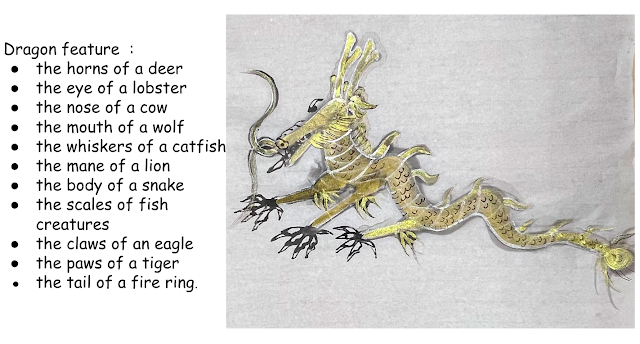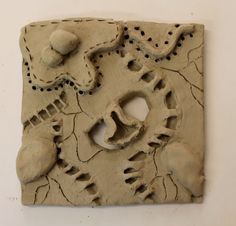Chinese Painting- Dragon 龍 and Lanterns 燈籠
Objective:
1. Students will demonstrate knowledge of the Chinese painting methods, materials, and brush techniques to express the cultural essence of the Chinese New Year.2. Students will demonstrate their knowledge of the Elements of Art and Principles of Design.
3. Students will demonstrate their understanding of Chinese styles, stylistic influence, and stylistic change by analyzing characteristic features of artworks from various historical periods, cultures, and genres.
- Landscape (山水)
- Figure (人物)
- Bird and Flower (花鳥)
Artwork by Ms.Tsai
5. The application of color in tones and values. Host- largest, strongest, and darker part of the object. Guests- smaller and lighter.
Chinese Painting Examples 






The Four Gentlemen The plum blossom, representing winter, is also symbolic of endurance as it often flowers when the snow is still on the ground. The flowers, which may be pink or white, appear before the leaves and this is how they are depicted in paintings.
The plum blossom, representing winter, is also symbolic of endurance as it often flowers when the snow is still on the ground. The flowers, which may be pink or white, appear before the leaves and this is how they are depicted in paintings.
The symbol of spring is the orchid, which represents spring, also signifies virtue and simple beauty. It is the delicate wild orchids that are referred to as they tend to grow in inaccessible areas such as crevices in rocks overlooking rivers or streams, and you could easily walk past without noticing them.
The bamboo is the symbol of summer but also of strength, both physical and mental, as it will bend and sway in the severest of gales but does not break. Its hollow trunk means humility. Bamboo, together with plum blossom and pine are also known as the ‘Three Friends in Winter’, as pine and bamboo are evergreens and the plum blooms in the cold.
The chrysanthemum, which represents autumn, is thought of as happiness and vitality, preferring autumn, which is less crowded with flowers than the profusion in spring.
- Dragons are deeply rooted symbols in Chinese culture and have long been associated with the emperor. The imperial throne is called the dragon seat and the emperor's ceremonial robes are called dragon robes.
- The Chinese dragon is depicted as a combination of a number of animals. It is thought to have the horns of a deer, the eye of a lobster, the nose of a cow, the mouth of a wolf, the whiskers of a catfish, the mane of a lion, the body of a snake, the abdomen of a large clam, the scales of fish creatures, the claws of an eagle, and the paws of a tiger, the tail of a fire ring.
- Dragons are believed to have the power to provide rain for growing crops. 祈龍求雨.
- In China, dragons are a very popular motif and appear on clothing, signs, flags, and in the shape of kites; life-sized puppets of dragons are an important part of many traditional festivals( Chinese New Year celebration, Lantern Festival, Dragon Boat Festival, Folk temple fairs)
- Chinese New Year Luna 1/1 -dragon dance

- Lantern festival - Luna calerder 1/15
- The Chinese Dragon Boat Festival takes place on the fifth day of the fifth lunar month (usually around the summer solstice in June).
- Folk temple fairs
Objective:
1. Sketch a Chinese dragon and one or few large lanterns in the foreground and several small lanterns in the background on a 12X18 paper 长方形纸 to express the cultural essence of the 2024 Chinese New Year of dragon picture.
2. Students will demonstrate their knowledge of the Elements of Art and Principles of Design.
3. Use this sketch to be a reference for learning Chinese painting.
3. Use the overlapping concept to arrange your objects. The dragon can be in front of the red lanterns or go around the lanterns. The foreground image should cover half of the 12x18 paper.
4. Arrange the dragon and the large lanterns in a rotation podition to express a moving motion.
5. Draw many faraway small lanterns in the background that appear to be a celebration scenery.
6. Save the empty space for the Chinese blessing words and your Chinese signature.
7. A portion of the object cropped out by the edges of a paper is an excellent composition. Cropping out an image draws a viewer's eyes to the subject and changes the size of the object to a large and clear view.

























.jpg)
















